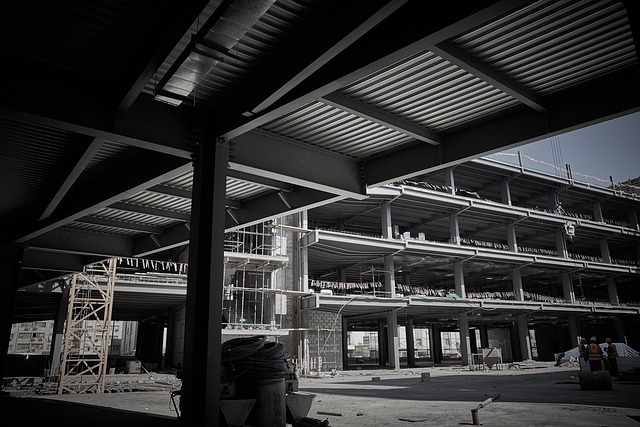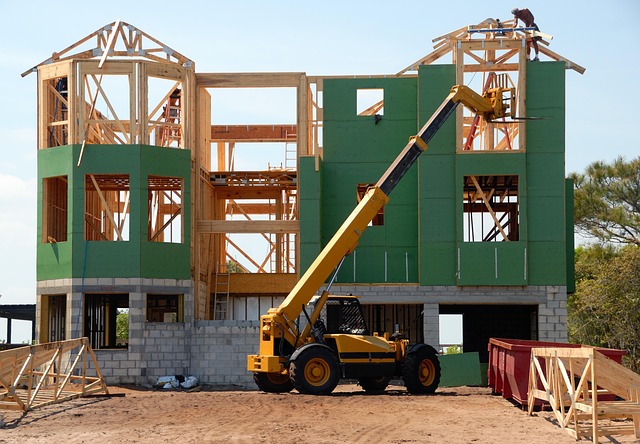Optimizing site structure through SEO involves creating clear hierarchies, implementing internal links, and using relevant anchor text to enhance user experience and search engine navigation. Start with identifying key pillar pages, strategically place internal links, and measure user behavior to adjust your strategy for improved search rankings and engagement. Learn how to effectively use site structure SEO techniques for better online visibility.
“Unleash the power of internal linking for modern SEO success! In today’s digital landscape, optimizing your website’s architecture is key to boosting search rankings. This comprehensive guide reveals effective strategies to enhance your SEO efforts. From understanding site structure and identifying crucial pages to mastering anchor text optimization and hierarchical navigation, you’ll learn how these elements intertwine. Improve user experience while driving traffic with internal links. Get ready to measure, adjust, and revolutionize your online presence through powerful SEO practices.”
- Understand Site Structure for SEO
- Identify Key Pages for Internal Linking
- Optimize Anchor Text Effectively
- Implement Hierarchical Navigation
- Enhance User Experience with Internal Links
- Measure and Adjust Internal Link Strategy
Understand Site Structure for SEO

Understanding your site’s structure is a cornerstone of effective modern SEO practices. A well-organized site architecture allows search engines to efficiently crawl and index your content, while also providing users with a seamless navigation experience. Begin by mapping out your website’s hierarchy, identifying key pages and their relationships. This involves creating a sitemap that outlines the site’s structure, ensuring all pages are linked logically and coherently.
A strategic site structure SEO approach ensures that your internal linking is not only beneficial for search engines but also enhances user engagement. Each page should have a clear purpose and be interconnected with relevant content, forming a network that supports both discoverability and understanding. By implementing these principles in your site structure SEO tutorial or strategy optimization, you can significantly improve your website’s performance in search results.
Identify Key Pages for Internal Linking

To optimize your site structure for SEO, start by identifying key pages that serve as pillars within your content ecosystem. These are typically high-value, informational pages that cover broad topics relevant to your audience. For instance, in a blog focused on digital marketing, you might have a page dedicated to “Understanding SEO Best Practices.” This pillar page provides an in-depth overview, linking to subsequent, more detailed posts on specific aspects like keyword research or link building strategies.
By strategically placing internal links from these key pages to relevant, supporting content, you enhance user experience and enable search engines to better understand your site’s organization. A site structure SEO tutorial might guide users on creating a hierarchical layout where each pillar page connects to several related posts, fostering a logical flow of information that benefits both visitors and search algorithms.
Optimize Anchor Text Effectively

Effective anchor text optimization is a critical aspect of modern SEO practices, particularly when implementing internal linking strategies for site structure improvement. When crafting anchor texts for links within your website, aim to be descriptive and contextually relevant. Use keywords that naturally reflect the content you’re linking to, ensuring they provide value to both users and search engines. For instance, instead of generic anchors like “click here,” consider using phrases like “read more about SEO best practices” or “explore our site structure optimization guide.” This approach signals to search algorithms that your internal links are thematic and beneficial.
Remember, the goal is to create a seamless user experience while enhancing the overall site structure SEO. Utilize site structure SEO tips to organize content hierarchically, making it easily navigable for visitors and search crawlers. A well-structured website with optimized anchor texts can significantly impact domain authority and improve your rankings in search results. Leverage site structure SEO tutorials to understand the best practices and stay updated on industry trends, ensuring your internal linking remains effective over time.
Implement Hierarchical Navigation

A well-structured site hierarchy is a cornerstone of any robust site structure SEO strategy. By organizing your content in a logical and hierarchical manner, you not only enhance user experience but also provide clear signals to search engines about the relevance and importance of different pages on your website. This involves creating a sitemap that mirrors the navigation structure of your site, ensuring each page has a distinct place and purpose. Start with categorizing your content into broad topics and then subdivide these categories into more specific subtopics, creating a clear hierarchy.
This hierarchical approach ensures that your site’s structure SEO optimization is not just about interlinking pages but also about demonstrating the relationship between them. For instance, using breadcrumb navigation or an expanded menu can help visitors and search engines alike understand the context of a given page within the larger website. Such strategic site structure SEO practices facilitate smoother navigation, quicker loading times, and improved engagement metrics – all factors that contribute to better rankings and higher conversion rates in the long run.
Enhance User Experience with Internal Links

Internal linking is a powerful strategy to enhance user experience and improve your site’s structure SEO. By strategically placing internal links within your content, you create a seamless journey for users as they explore your website. These links act as digital roadmaps, guiding visitors from one relevant page to another, fostering engagement and reducing bounce rates. For instance, when crafting an in-depth blog post, linking to related articles or resources not only enriches the reader’s experience but also ensures your website offers comprehensive coverage of a topic.
Organizing content with a well-thought-out site structure SEO strategy is key. Using internal links to connect related pages helps search engines understand the hierarchy and relevance of your content. This optimization technique allows you to establish a clear flow of information, making it easier for both users and search algorithms to navigate your website. Implement these SEO tips by including internal links in anchor text that accurately represents the linked page’s content, ensuring a positive impact on user experience and boosting your site’s overall visibility in search engine results.
Measure and Adjust Internal Link Strategy

To effectively use site structure SEO, regularly measuring and adjusting your internal linking strategy is paramount. Start by evaluating click patterns and user behavior using analytics tools to understand which links are driving the most traffic and conversions. This data will reveal valuable insights into your site’s architecture and help identify areas for improvement.
For instance, analyze page performance, bounce rates, and time spent on pages linked from specific internal sources. Adjust your strategy accordingly, strengthening or reorganizing links based on these findings. Remember, a well-optimized site structure SEO not only enhances user experience but also improves search engine visibility by helping crawlers understand your content hierarchy and relevance.
